Carnival Around the World 🎉
Carnival is a major tradition in numerous regions and diverse cultures all over the world. People dress up, there are parades and parties, food and drinks abound, and of course, plenty of promiscuity. Do you know where this thrilling and historic custom comes from? The Carnival festival has been part of humanity’s folklore for centuries.
It turns out that different ancient civilizations (dating back several thousand years) have their own origins for Carnival. The ancient Greeks celebrated the god Momo during this time of year, the deity of poets and writers. Momo was a cheerful and humorous spirit who mocked everything, even other deities. The Romans, on the other hand, dedicated a yearly party to celebrate Dionysius, the god of wine and mirth. For the Sumerians, it was important to expel the evil spirits from the crops with a great feast. Meanwhile, the Egyptians consecrated these days to Apis, the god associated with fertility.
No matter the origin, there’s no doubt about Carnival’s ability to create exciting and unforgettable experiences for everyone. Carnival season brings lights, parades, and decadent rituals that turn everyday norms upside down. This time of year is special because it’s considered a rite of passage from darkness to light, from winter to summer (in the northern hemisphere, at least).
Here at Civitatis, we’ve traveled the world and come up with a list of the 8 most lively, exciting, colorful, and exhilarating Carnival traditions. So get your best costume ready and get ready for a few days of pure joy. Here are the world’s very best Carnival celebrations:
Mardi Gras in New Orleans
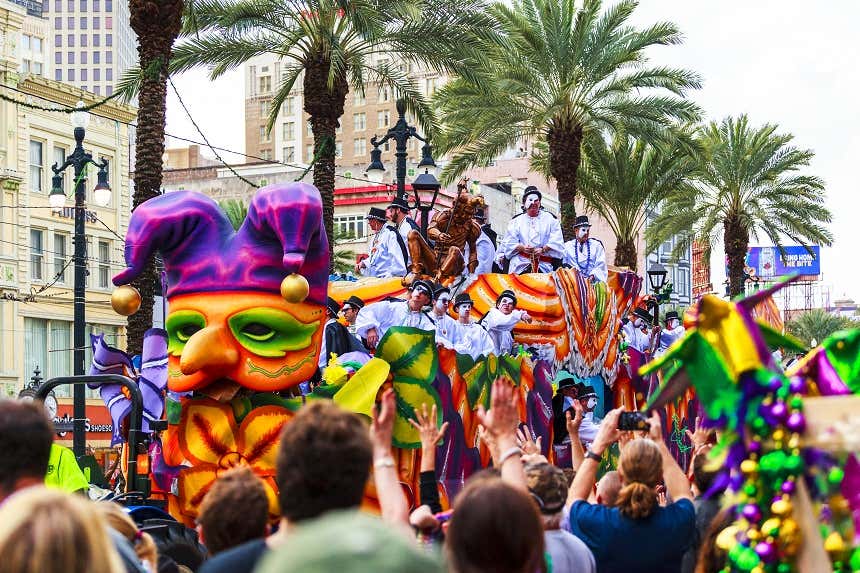
Mardi Gras, or Fat Tuesday, has its roots in 17th and 18th-century European traditions within the House of Bourbon. Carnival used to be a party for the privileged few, but today it’s a merry-go-round of people of all ages who take to the streets in increasing numbers. As for the outfits, anything goes! Don’t be shy when it comes to sporting the most obscure and peculiar Carnival costume. You’ll also need to take a backpack to carry everything, including the beads and cups that are thrown from the extravagantly decorated floats passing by in the New Orleans parade.
Venice Carnevale (Italy)
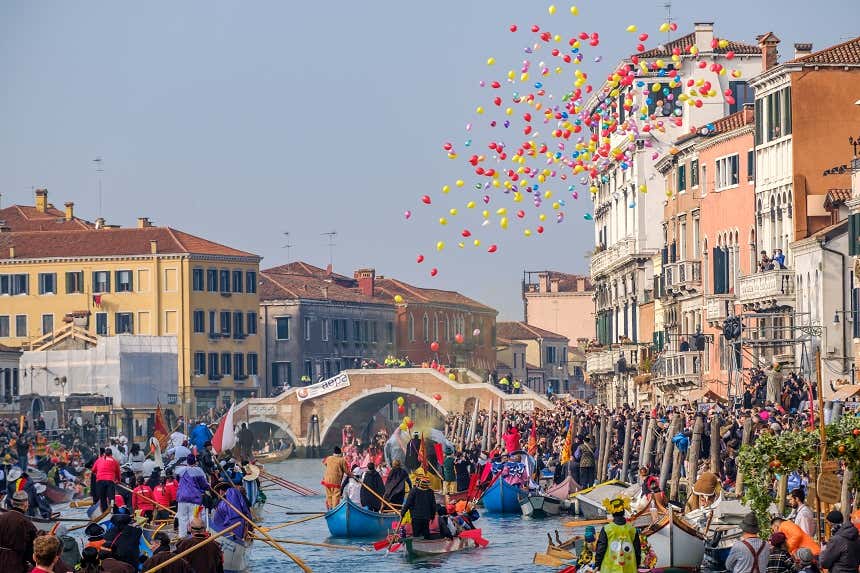
A golden veteran on this list, Venice’s Carnival is said to have originated in the 12th century. If you want to know more about its history, you can’t miss out on this fascinating tour of its origins. In nearly 900 years, the festivities of the Venice Carnival have evolved quite a bit, but the tradition of wearing masks remains a central component and has become part of other Carnival celebrations all around the world. Even if you travel to Venice at a different time of year, you can learn how to make these traditional masks in a Venetian mask workshop.
But if you’re lucky enough to visit Venice during Carnival season, you’ll be able to choose from a variety of masks, such as the Bauta, the Colombina, or the Medico della Peste (plague doctor). Then you can take to the streets and canals for a unique Venice experience. If you prefer something more exclusive, don’t miss this Carnival party at the Venetian Galleon. You’ll understand why this is considered one of the best Carnivals in the world!
Tenerife Carnaval (Canary Islands, Spain)
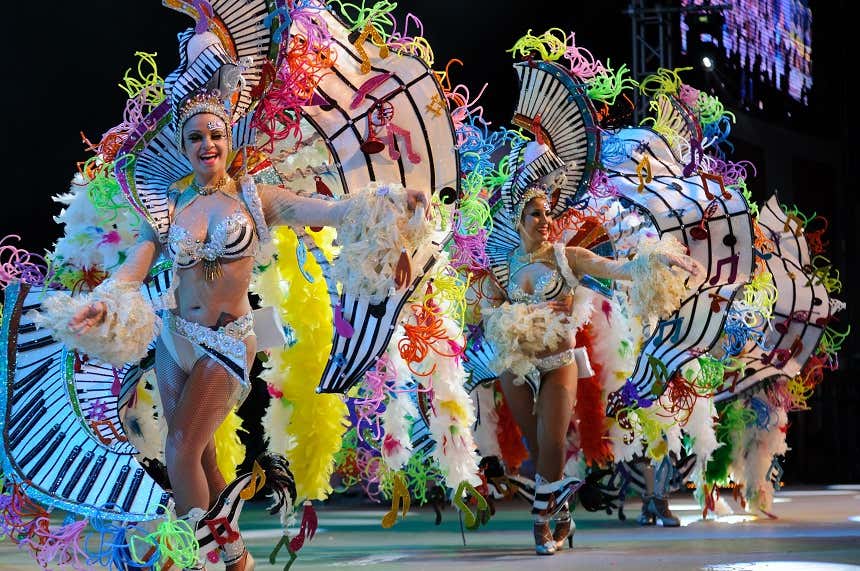
Tenerife hosts numerous festivals all year round, but none of them come close to its famous Carnival celebration, which is considered the second most popular Carnival party in the world after Rio de Janeiro. The Santa Cruz de Tenerife Carnival has filled the streets with explosions of joy and showers of color for several centuries. The city becomes one big, rainbow party for 15 days of pure extravagance, including a gala party to choose the Carnival queen, costumes, marches, and bohemian parades. In a break from partying while you’re in Tenerife, make sure to try the local Canarian food!
Cologne Karneval (Germany)
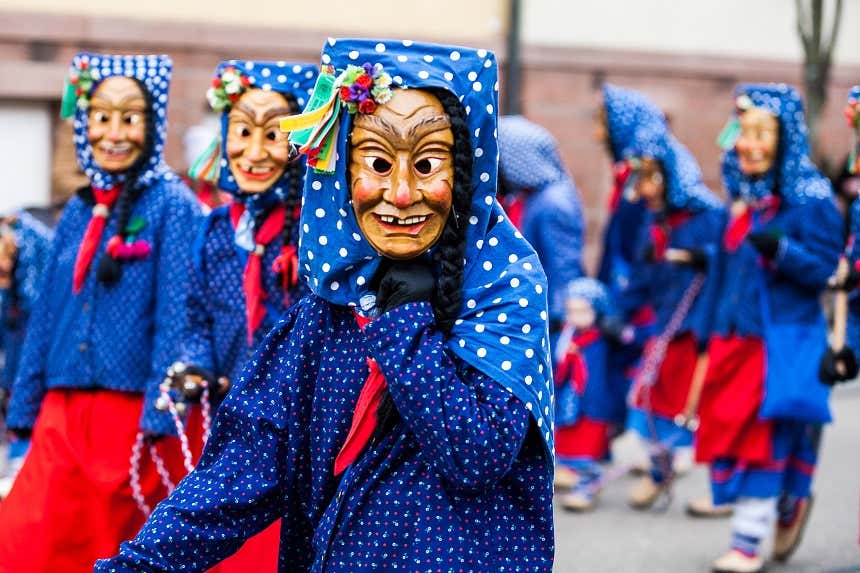
Cologne‘s Carnival season (affectionately called the “fifth season”) officially begins earlier than most. The main events happen in February. The party begins with the Women’s Carnaval, when locals wear party clothes to work, followed by masquerade balls and festivities in the evening that last well into the night.
The Carnival festival is more exciting on the weekends, reaching its peak during the Monday of Roses parade (also known as Carnival Monday). The parade through Südstadt, the southern part of Cologne, features a variety of floats made from objects such as boxes of chocolates and candies that are sure a crowd-pleaser.
Rio de Janeiro Carnaval (Brazil)
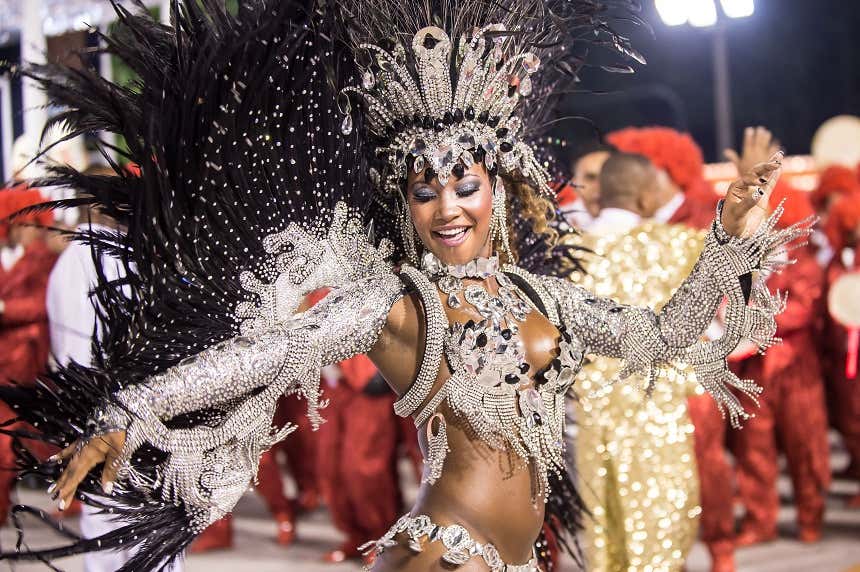
The most famous Carnival celebration in the world dates back to 1723 and attracts more than two million people each day of the festivities. More than 200 blocos, or groups of performers, take to the streets of Rio during the day, and the festivities last all night, even until the following morning or into the next day. Check out this ticket to see the Carnival parade from a privileged vantage point in the Sambadrome of Marquês de Sapucaí, a once-in-a-lifetime experience.
In Rio, during Carnival and also throughout the whole year, you can visit a samba school rehearsal or take a backstage Carnival tour to discover all the secrets of this legendary Brazilian tradition.
Oruro Carnaval (Bolivia)
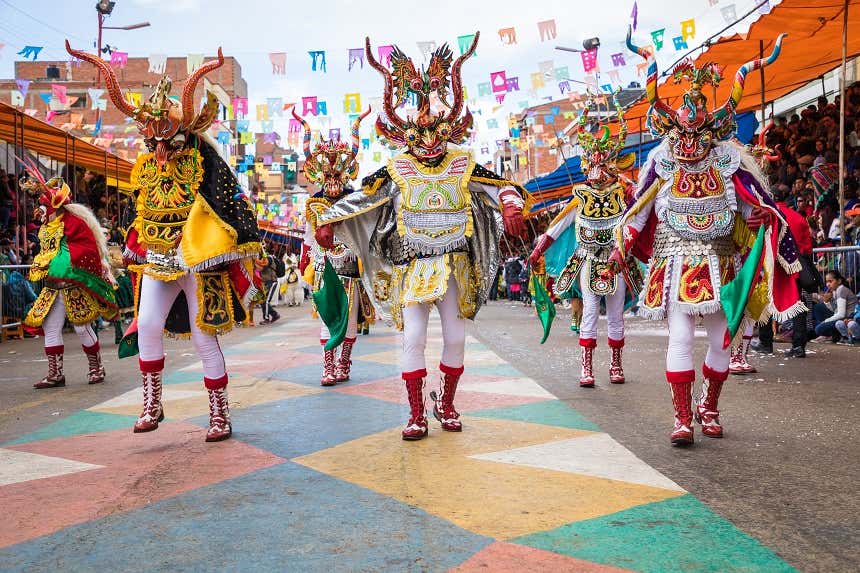
What was once an indigenous celebration is now a festivity with a strong connection to religious symbolism in the form of Pachamama (Mother Earth) and Uncle Supay (God of the underworld). These two icons guide the festival, which features the ritual known as the “dance of the demons“, La Diablada, which represents the triumph of good over evil.
With thematic parades depicting the characters from a wide variety of folk myths and legends, Oruro’s Carnival celebration is one that definitely manages to turn normality on its head. While visiting the city, we recommend a visit to the National Anthropological Museum to learn the ins and outs of this ancient festival.
Binche Carnaval (Belgium)
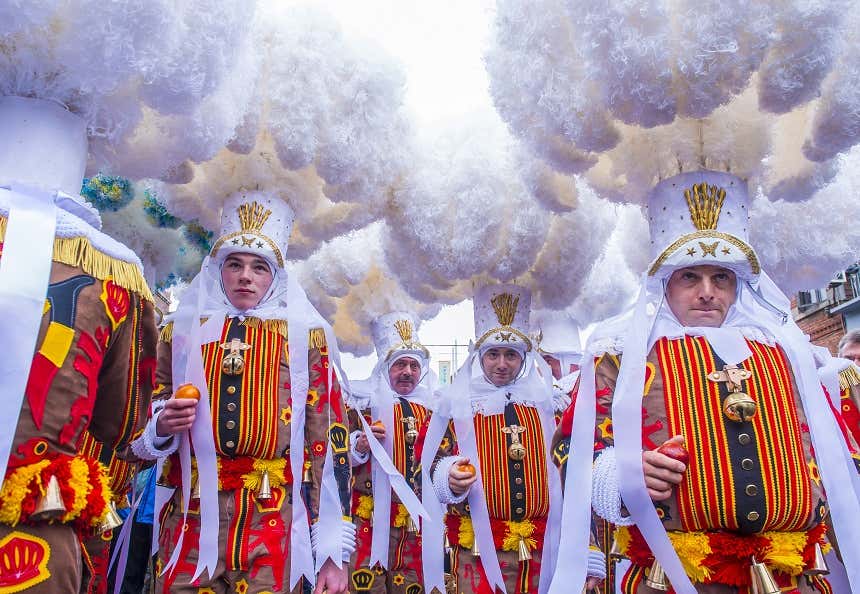
In 2003, UNESCO proclaimed Binche’s carnival celebration a “Masterpiece of the Oral and Intangible Heritage of Humanity,” a testament to its unique character. It’s true that Belgium hosts several different Carnival celebrations during the same period, but the one in Binche stands out with its extravagant performers (known as Gilles), events where they throw oranges (a sign of good luck), and other slightly strange practices.
There is disagreement about the origin of this carnival celebration. One of the most popular theories says that one of the 14th-century Gilles was of Inca descent (a flattering but improbable theory) and wore a costume whose exotic appearance gained popularity among the locals. This might explain the huge feathered hats worn by today’s Gilles… or not.
Nice Carnaval (France)
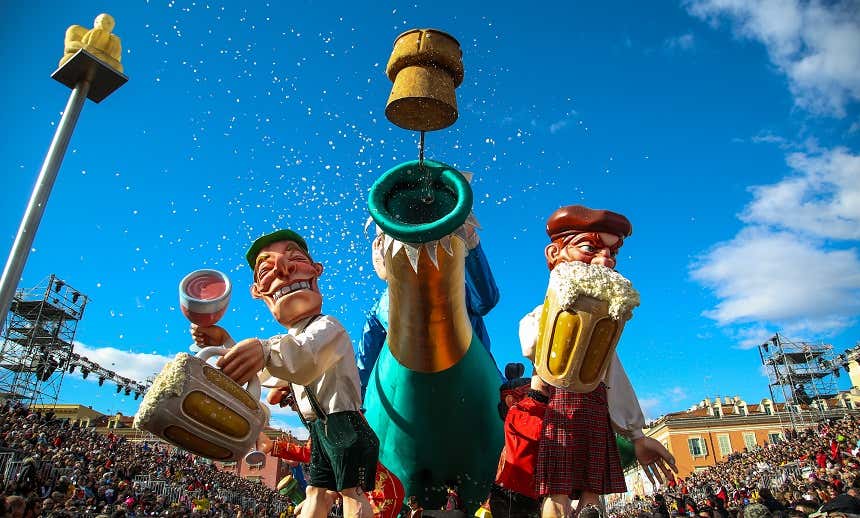
With six carnival parades, 17 floats, and thousands of dancers and musicians from all over the world – the Nice Carnival celebration is a lively and vibrant festival full of tradition. No wonder it’s considered one of the best in Europe! Be sure to see the Flower Battle (Bataille de Fleurs) while you’re there! This elegant parade brings countless flower-covered caravans through the streets, an enchanting sight for onlookers. They say that those who catch the bouquets will have a lucky year!
Fonte: https://www.civitatis.com/blog/en/the-8-best-carnival-celebrations-in-the-world/


Comentários
Postar um comentário